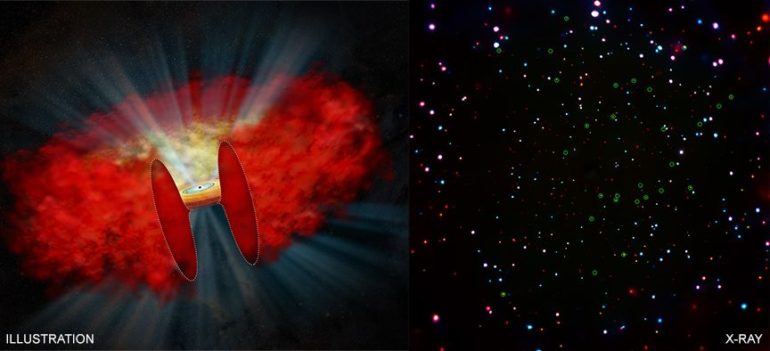Over two dozen misidentified supermassive black holes have finally been revealed in a new, sky-scanning study.
A team of researchers led by Erini Lambrides of Johns Hopkins University (JHU) in Baltimore, Maryland has spotted 28 supermassive black holes that have been masquerading as other cosmic objects using a host of telescopes including NASA’s Chandra X-ray Observatory, Hubble Space Telescope and Spitzer Space Telescope. The team observed these black holes which lie 5 billion light-years or more away within the Chandra Deep Field-South (CDF-S), the deepest X-ray image ever taken.
“With our new identifications we’ve found a bunch of heavily obscured black holes that had previously been missed,” Lambrides said in a statement. “We like to say we found these giant black holes, but they were really there all along.”
Scientists had already identified 67 growing black holes within this image, obscured by “cocoons” or surrounding envelopes of dust and gas. Now, with this new study, researchers have identified these 28 supermassive black holes, which were previously miscategorized as either slowly growing black holes with low-densities or without cocoons or distant galaxies, according to a statement.
“This could be considered a case of mistaken black hole identity,” co-author Marco Chiaberge of Space Telescope Science Institute in Baltimore, Maryland, said in the statement. “But…



